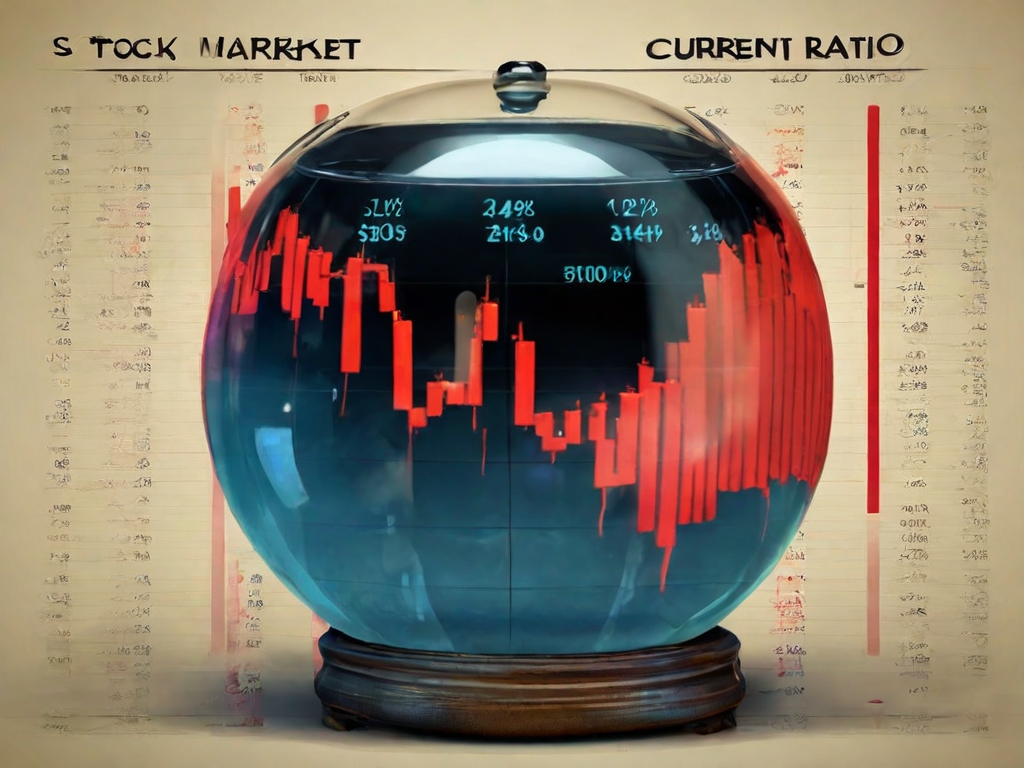
Introduction
In the world of stock analysis, investors are inundated with a plethora of financial metrics, every vying for attention and claiming to offer the last insight into a company’s monetary fitness. Amidst this sea of numbers, one ratio stands out as a stalwart indicator of a company’s brief-time period liquidity and solvency – the “modern-day ratio.”
Understanding the modern ratio and its implications is paramount for traders searching for to make knowledgeable choices inside the risky international of inventory markets. In this comprehensive manual, we delve deep into the significance of the modern-day ratio in inventory evaluation, uncovering its nuances and losing light on its role as a cornerstone metric for investors.

Chapter 1: Demystifying the Current Ratio
The current ratio, often called the “working capital ratio,” is a fundamental economic metric that measures a agency’s potential to fulfill its quick-time period responsibilities with its quick-time period belongings. Expressed as a ratio, it’s far calculated by using dividing a enterprise’s present day belongings with the aid of its modern-day liabilities.
Mathematically, the system for the contemporary ratio is
Current Ratio= Current Assets/Current Liabilities
Current assets encompass coins, bills receivable, inventory, and other assets which might be expected to be transformed into cash inside 12 months, at the same time as present day liabilities encompass responsibilities due in the identical duration, together with debts payable, brief-time period debt, and amassed expenses.

Chapter 2: Interpreting the Current Ratio
The interpretation of the modern-day ratio is pivotal in discerning a corporation’s economic standing. A ratio extra than 1 indicates that the company possesses greater cutting-edge assets than cutting-edge liabilities, suggesting a healthy liquidity position. Conversely, a ratio beneath 1 means that the employer can also battle to satisfy its quick-time period duties with its current property.
While a excessive contemporary ratio may also seem favorable before everything look, excessively high ratios ought to indicate inefficient use of property, which include excessive stock or uncollected receivables. Conversely, a low contemporary ratio may additionally signal liquidity concerns, probably main to difficulties in servicing debt or paying suppliers.

Chapter 3: Contextualizing the Current Ratio in Stock Analysis
In the realm of inventory evaluation, the modern ratio serves as a essential device for investors to assess the monetary health and operational performance of a employer. When evaluating capability investment opportunities, traders frequently scrutinize the present day ratio along other key economic metrics to gain a holistic expertise of a enterprise’s performance.
For instance, in industries with excessive inventory turnover, such as retail or production, a lower cutting-edge ratio may be ideal due to the fast conversion of inventory into cash. Conversely, in sectors characterized by longer income cycles, such as production or real estate, a better contemporary ratio may be preferable to climate fluctuations in coins waft.

Chapter 4: Limitations of the Current Ratio
Despite its importance, the cutting-edge ratio has its limitations and need to be interpreted inside the broader context of a agency’s operations and industry dynamics. One of the primary criticisms of the cutting-edge ratio is its failure to account for the quality and liquidity of cutting-edge property.
For instance, whilst bills receivable are labeled as cutting-edge property, the collection length and the probability of receivables turning into coins range drastically amongst corporations. Similarly, inventory valuation strategies can impact the accuracy of the present day ratio, as the selection between FIFO (First In, First Out) and LIFO (Last In, First Out) can distort stock values.

Chapter 5: Practical Applications of the Current Ratio
Despite its limitations, the cutting-edge ratio stays a valuable device for buyers searching for to gauge a company’s quick-term financial health. By undertaking fashion evaluation and evaluating a company’s cutting-edge ratio to its peers and industry benchmarks, traders can find precious insights right into a employer’s operational performance and monetary resilience.
Moreover, the present day ratio performs a pivotal position in credit score evaluation, with lenders the usage of it as a key determinant in assessing a employer’s creditworthiness and capability to pay off debt obligations. A sturdy modern ratio can bolster a business enterprise’s borrowing potential and lower its cost of capital, thereby enhancing its economic flexibility and increase possibilities.

Conclusion
In conclusion, the cutting-edge ratio stands as a cornerstone metric in inventory evaluation, providing buyers valuable insights right into a enterprise’s short-time period liquidity and solvency. By know-how the nuances of the contemporary ratio and its implications, buyers could make informed decisions and navigate the complicated panorama of stock markets with confidence.
As with any economic metric, it is essential to bear in mind the present day ratio along side different key performance signs and qualitative factors to benefit a comprehensive know-how of a company’s financial function. Armed with this expertise, investors can discover hidden opportunities and mitigate risks, ultimately paving the manner for lengthy-time period achievement within the dynamic international of investing.
